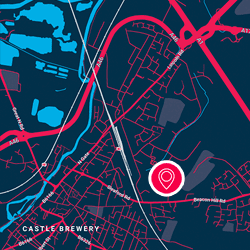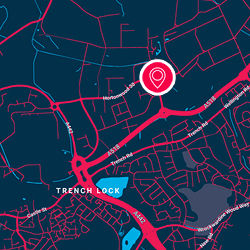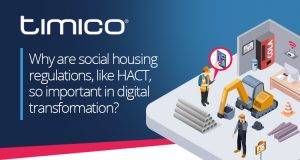BLOG
A Real-World Cyber Security Example – Lessons Learnt
It is a sad fact that while the country suffers with Covid-19, businesses are not only battling with a weakened economy, but are also facing soaring cyber security threats, as criminals seek to exploit vulnerabilities.
In this article, we identify what lessons businesses can learn from the pandemic, and we identify the stark similarities that affect the way businesses approach cyber security. We offer this in the hope that the virus can provide a real-world metaphor, drive home the importance of security measures, and demonstrate how practises should evolve faster than the threats.

2020 – A year of the Covid-19 virus | What did we learn?
- Entry points – By the time we were aware of the COVID threat; millions of people had already transported the virus globally.
- Early testing – By introducing measures for testing and quarantining individuals at UK Ports, further mass infection could have been prevented.
- Restrictions – Lockdown is a way of containing the virus, but very limiting on people’s livelihoods.
- Testing – Testing is a great means of detecting the virus to then help contain it with quarantine; however, this needs to be wide-spread, otherwise it is less efficient.
- Track and trace – An effective means of mitigating a virus is to have the means of tracking a virus to its origin, this only works efficiently when the solution is implemented properly, and all individuals have the means and desire to report back.
- Team effort – People do not follow the rules; either maliciously, or simply because it is too complex to follow.
Applying this learning to cyber security
As a business owner or IT Director, ask yourself the following questions, and be honest with yourself:
- Entry points – Is your business detecting efficiently at your ports? Is your firewall using IPS (Intrusion Prevention System) and SSL Inspection? What happens to that information? Does it have to be extracted manually, or does your security team have a live feed on a dashboard?
- Early testing – Do your security devices and processes test incoming traffic for the latest known threats and unknowns, or does updating the security layer involve a manual process?
- Restrictions – Do the measures in place to contain a virus, restrict the day-to-day operations of your employees? Is your network segmented to reduce the impact of a positive test to smaller subsets of employees or individual applications?
- Testing – Are you testing efficiently at your endpoint devices, such as desktops, laptops, and mobile devices? Is the reporting accurate and real-time? Are the updates automatic?
- Track and trace – Does your infrastructure have the capability to track and trace the movement and mutation of a virus across your network? Can you identify the path the virus has taken to prevent a further attack?
- Team effort – Cyber-attacks have, over the years, become more common and more intelligent. As a result, security systems have evolved to meet those threats. But despite this, the largest security risk in an organisation is the people. Malicious attacks are often embedded in emails, phishing attacks, or contained in files just waiting to be opened. Are your staff trained in cyber security best practises? Do you maintain a training schedule to ensure security awareness is refreshed on a regular basis?
We have identified the similarities of Covid-19 and cyber security, and some of the solutions. However, at Timico, we understand that all businesses are unique. We approach each challenge with the future in mind, and the solutions we propose are a result of the desired business outcome.
To learn what solutions might be introduced to overcome our, download our FREE whitepaper by clicking the image below.












